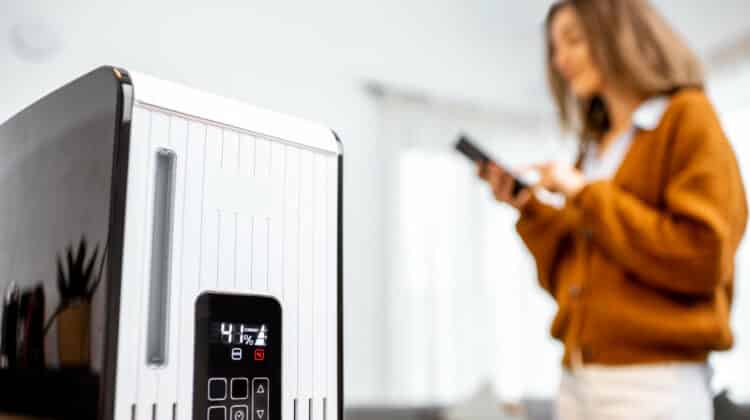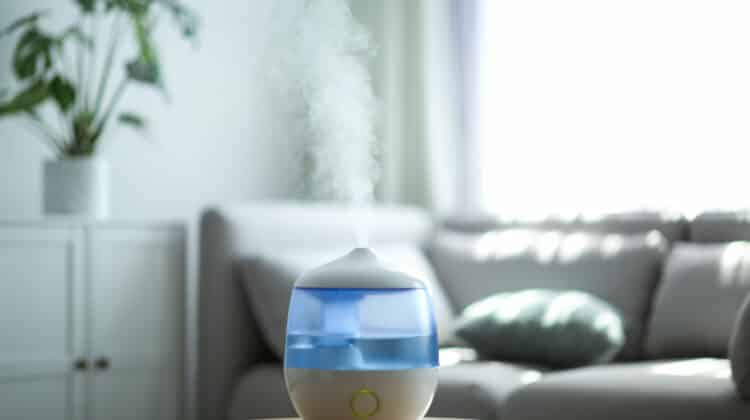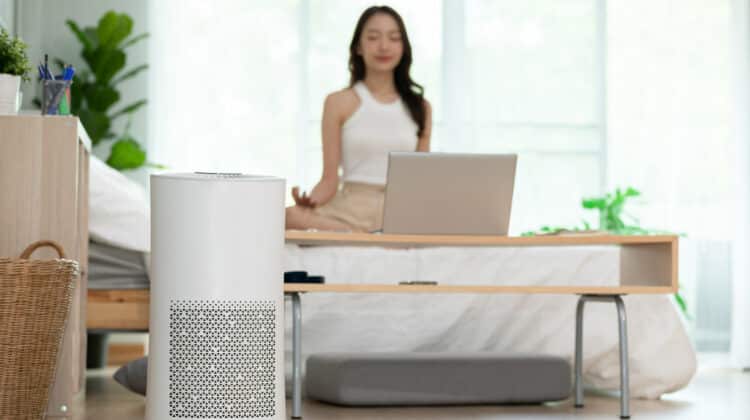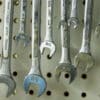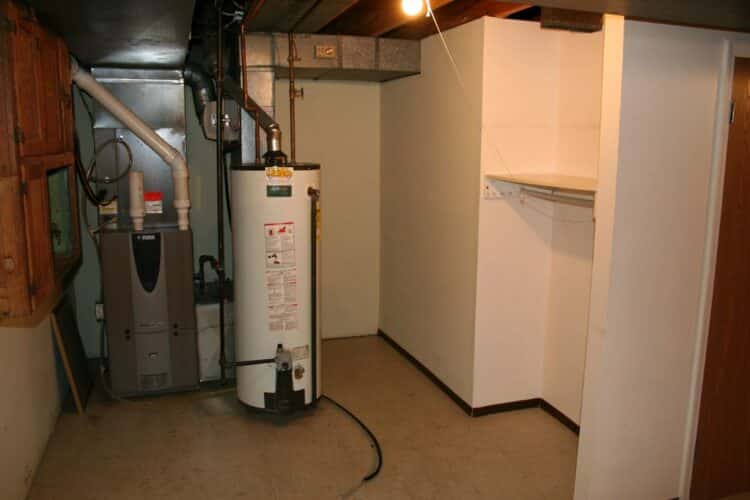
Overly dry air has adverse effects not only on your health but can also damage your furniture. Maintaining your home’s humidity between 40 and 60 percent is essential. It is your best shot at keeping your house and body moisturized.
A furnace humidifier or a whole-house humidifier is an excellent way to maintain healthy ad acceptable humidity levels.
These types of humidifiers differ from the other types because it covers your entire home ad needs less maintenance.
Here is a buyer’s guide to help you pick the right unit to satisfy your home’s needs. Feel free to contact us for more information.
Table of Contents
Measurements of humidity
There are two measurements for humidity, which is absolute and relative. The relative humidity is the correct measurement for your house.
You can define absolute humidity as the percentage of the vapor in the atmosphere without considering the temperature.
Relative humidity defines as the total water vapor in the air at a cert temperature in comparison to the vapor air can hold at an equal temperature. For instance, warmer air can retain lots of water than colder air. That is why it is more humid at 20 F because an equal quantity of water vapor takes up more space than it would at 70 F.
Having this information is essential as how you are feeling, plus the humidity levels of your house are dependent on the temperature. For instance, it is drier during winter because you are continuously heating your home and the warm air decreases the water vapor in your home. It, in turn, reduces the relative humidity, and you will need a humidifier to keep moisturized.
Types of Furnace Humidifiers
There are three main types of furnace humidifiers you can choose from, that is steam, evaporative and self-contained humidifiers. Self-contained humidifiers work individually. However, the first two types make a direct connection to your furnace. You can install a humidistat to monitor the relative humidity of the home and controls the humidifier.
Evaporative humidifiers
These types of humidifiers use wet pads to add moisture to the incoming dry and warm air from your furnace. A direct water line continuously supplies water to the humidifier pad. Warm air vaporizes the water as it blows through the humidifier pad before absorbing it.
Evaporative humidifiers further subdivide into two primary options, bypass, and powered humidifiers.
• Bypass humidifiers use a bypass duct to pass on furnace air. The air then picks the moisture by blowing over the wet pad before distributing it into your home. The bypass humidifier needs two connections to the ductwork. And you can install it on either the return or the supply duct and close the bypass damper whenever you do not need the humidifier.
• Powered humidifiers connect to the supply duct directly. They also allow for a better distribution of moisture into the air because they use fans to pull the water through the wet pad.
At the start of winter, the damper (on the return duct) switches from summer to winter mode. That way, it directs the return air to the humidifier pad.
The moving components of all evaporative humidifiers that can fail are few. These humidifiers are simple and use the heat from the furnace to create moisture. Therefore, it doesn’t need a lot of electricity for its processes.
However, these humidifiers are not very efficient. For instance, if the furnace is not working, there won’t be heat to evaporate the water. And they convert only 20 to 30 percent of the water, and you will need to drain the remaining excess water. All in all, they are cheap to operate and maintain.
You can choose this humidifier if you are on a tight budget. It still provides a certain amount of comfort.
Steam humidifiers
A water canister replaces the operations of a humidity pad. When the system detects a decrease in humidity, the humidifier boils the water in the canister electrically to release steam, which then distributes it into the furnace’s duct system.
It differs from the evaporative humidifier because it produces its power to create steam. Regardless of whether you keep your furnace on, the humidifier will still run. However, the blower fan still needs to be on at the time.
These humidifiers offer more comfort and perform better than the first type because of the continuous levels of moisture, but they are costlier.
Self-contained humidifiers
These humidifiers are independent in that they do not require a furnace system. It uses a fan to distribute humidified air and is perfect for anyone who lacks ductwork.
Self-contained humidifiers are the only ductless option of whole house humidifiers.
Sizing a humidifier
There are two main aspects that this depends on, that is building envelope and building volume.
1. Building volume refers to the space of your house you would like to humidify measured in cubic feet. You can calculate this by multiplying the square feet of your home by the height of the ceiling. Or you can use the length, width, and highest point of your home.
For instance, if the humidifier is for 4000 square feet (371.61 m2) home, and the ceiling is a height of 10 feet (3.05 meters), then you multiply the two to get cubic feet of 40000. You can then use this information when picking a humidifier unit.
2. A building envelope is how drafty or enclosed your home is. The older the house, the quicker it lost air. Contemporary homes have better insulation and double-paned windows in comparison and are therefore better at retaining the air.
For instance, a home has a loose building envelope if it has 0-R9 insulation and single-pane windows. The building envelope is average if the insulation is R10-19 and it features double pane windows. Lastly, a tight building envelope refers to a home with a low E or triple window panes and R20 to R30 or more.
You can then apply the information you get from the building envelope and building volume to size your humidifier.
You can use a sizing table to determine the correct gallon per day your humidifier should have. However, you will still require the above information to get the value you need.
If you pick a steam humidifier, ensure that it has an equal or greater size or capacity (gallons per day) than the value you get.
If you choose an evaporative humidifier to use with your heat pump, pick one that triples the capacity you match on the list.
However, if you will be using it with a furnace (in place of a heat pump), then double the listed capacity.
For instance, using our earlier example, let’s find the perfect humidifier. The home’s building volume is 40000cubic feet (1,132.67 m3). And assuming that our house has a loose building envelope, we need a 50.1 gallon (189.65 l) per day humidifier. We can pick a steam humidifier with a greater than or equal capacity.
Maintenance of whole-house humidifiers
There is not much maintenance required to do for a furnace humidifier. Personal humidifiers are a lot more work, as they are prone to bacterial and mold growth.
However, you should not set the humidifier and forget all about it. You should replace the wet pads in evaporative humidifiers once every year and change the canisters in steam humidifiers once every year. You should also test the unit to
ensure that there are no leaks or obstructions to the water flow.
Final word
Too much of anything results in a bad situation. If your home is too humid, you will be prone to mold, and your comfort levels will reduce. You may require a dehumidifier if your levels are continually more than 60 percent.
Lower than 40% levels of humidity may require you to get a furnace humidifier and add the moisture in your home. Both your house and body will benefit from it.
